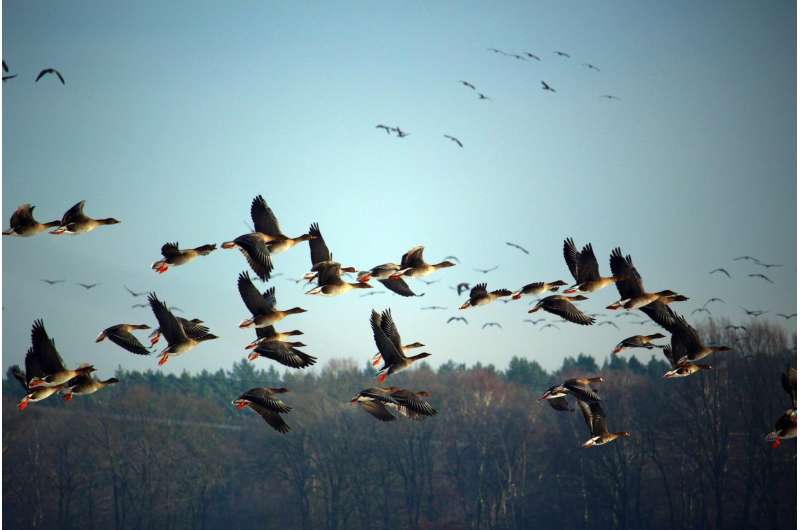Land around powerlines could be boon to birds

Transmission lines may be eyesores for most people but for songbirds, the forest around them might just be critical habitat.
A team of researchers want to see if these birds are populating land cleared along the route of a powerline—as well as areas that have been recently logged—in New Hampshire and Maine.
In other parts of the country, the shrubby habitat of these younger forests have been found to offer much-needed protection for the birds from predators, as well as a steady diet of insects and fruit.
One of the researchers says these habitats are "incredibly important" for the songbirds in those parts of northern New England.
"Our goal is to get a better understanding for how these habitats function in our landscape," said Matt Tarr, a wildlife specialist at the University of New Hampshire Cooperative Extension.
Tarr and his colleagues will catch the songbirds in mist nests starting later this month, band them and then track them over the next two years. They will be focused on 24 transmission line rights of way and 12 areas that been logged in southeastern New Hampshire and southern Maine.
Tarr said there are as many as 40 species of songbirds that nest in young forests and another group that nest in mature forests.
"However, there is growing evidence suggesting that after their birds finish their nesting and the young leave the nest, they leave mature forests and come into the young forest to complete their development."
The nearly $250,000 study is being funded by the federal Natural Resources Conservation Service as well as the National Fish and Wildlife Foundation's New England Forests and Rivers Fund. A contributor to the New England fund is the utility Eversource, which has proposed the Northern Pass energy transmission project that has sparked criticism from property owners, tourism officials and others.
Northern Pass entails building a 192-mile electricity transmission line from Pittsburg to Deerfield, New Hampshire, carrying enough Hydro-Quebec energy to southern New England markets to power about a 1.1 million homes.
Tarr said the study isn't about finding an upside to transmission lines but rather trying to determine how birds use the forests that emerge after a project is built.
"It helps us understand how transmission lines function in providing that habitat on the landscape," he said.
The information they get could be critical to policymakers as they work to create more young forests for birds as well as other species like cottontail rabbits in New England.
"Do they have positive effects or do they have negative effects?" he said. "We might find these rights of way aren't used as we think they are for mature forest birds. That would be important for us to know."
© 2017 The Associated Press. All rights reserved.

















